Water Issues - Past and Present - In Valencia
Posted on: May 2017Grace Harland, Waterwise
 |
Grace Harland: Intern at Waterwise for the last 6 months, responsible for supporting UK and European projects to deliver greater water efficiency, and recent graduate of the University of Leeds (BSc Geography 2016).
|
Valencia, a city located on the south-east coast of Spain, is the country’s third largest city after Madrid and Barcelona with 800,000 inhabitants in the administrative centre. It is at the forefront of water saving initiatives with its smart metering programme and intelligent irrigation systems for the huertas (farmland) surrounding the city; as such it was this year’s WATEF study trip destination.
Turia Gardens
The Turia Gardens sits on an old riverbed and is one of the largest and most charming urban parks in Europe, running through nine kilometres of the city from west to east. The gardens boast palm and orange trees, fountains, aromatic plants and ponds as well as sports facilities and cafes. The construction of a 12 kilometre long, 175 metre wide diversion channel began in 1964 by the government following the diversion of the Turia River to protect the city from flooding. A catastrophic flood on the 14th October 1957, known as the Great Flood of Valencia, triggered this decision, in combination with the rivers history of periodic flooding and susceptibility to more frequent and higher magnitude floods in the future. More than 400 floods were recorded in the region of Valencia from 1483 to 1982, 75 from the River Turia specifically (1321 to 1897). The new riverbed has the capability of discharging 5,000 cubic metres of water per second; 1,200 cubic metres greater than the discharge during the 1957 flood. The map below illustrates the original route of the river, now depicted by Turia Gardens, and the new diverted route.
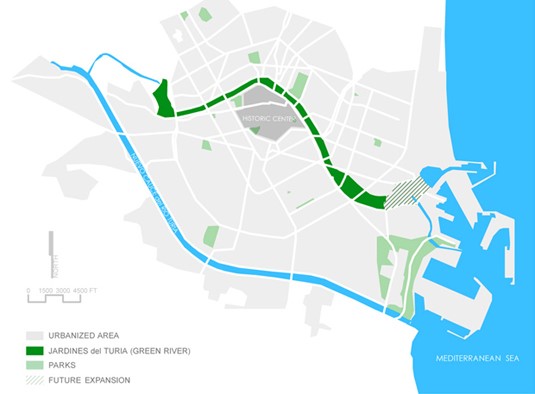
Map depicting the location of Turia Gardens and the new diverted route of the Turia River, Valencia
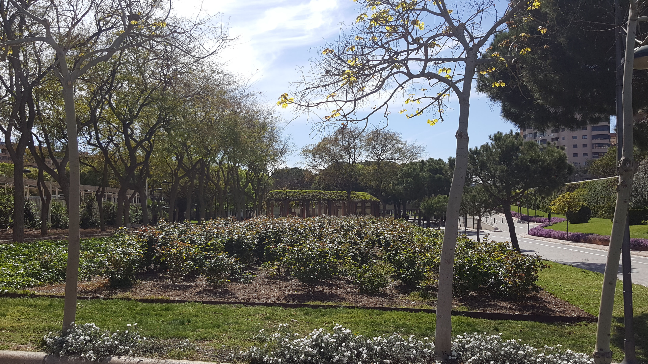 |
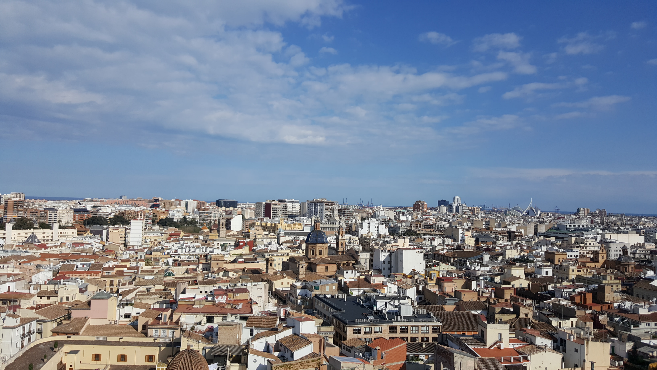 |
Turia Gardens, Valencia
|
Rooftop View of Valencia
|
Smart Metering
Water in Valencia is supplied to 1.5 million people on a daily basis by Aguas De Valencia. This equates to 275,000 cubic metres of drinking water. In 2010 they launched a smart metering programme, following a 4 year testing period of different meters from different suppliers. The utility currently manages 1.1 million meters, of which 630,000 are AMI smart meters, which can transmit consumption data up to 24 times a day to Aguas de Valencia. This data is also available to the customer. The programme has helped to reduce Valencia’s water requirement by 35 percent since 2006. Aguas de Valencia is one of the most advanced in the world with regards to smart metering uptake, and hopes to further its innovation and improve their methods of communication with customers to optimise engagement and water efficient behaviour. The smart H2O project is an example of this. It engaged 600 customers using an ICT platform, and reduced average consumption by approximately 17% through behaviour change. Meeting Aguas de Valencia also provided an opportunity to discuss the DAIAD project that Waterwise have been working on and new approaches to point of use smart metering in showers. The main control room at Aguas de Valencia displays water supply and distribution in real time, as photographed below.
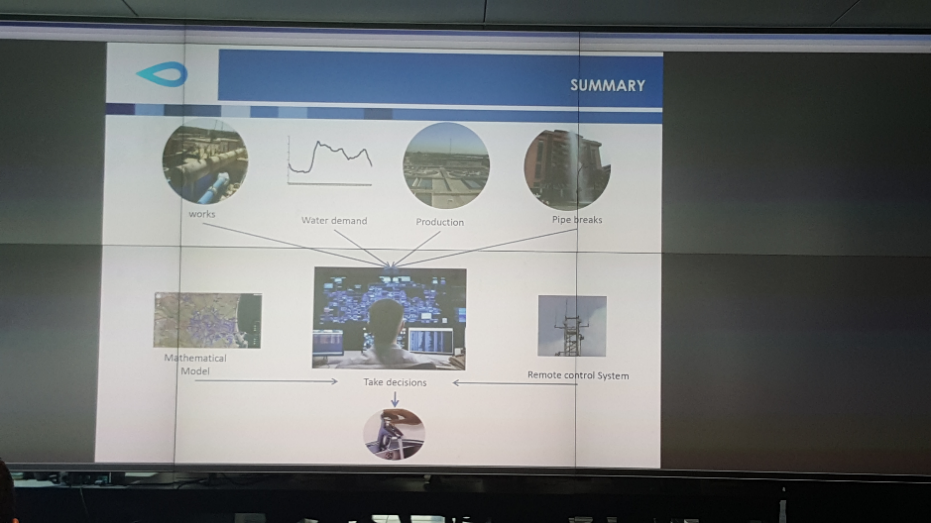 |
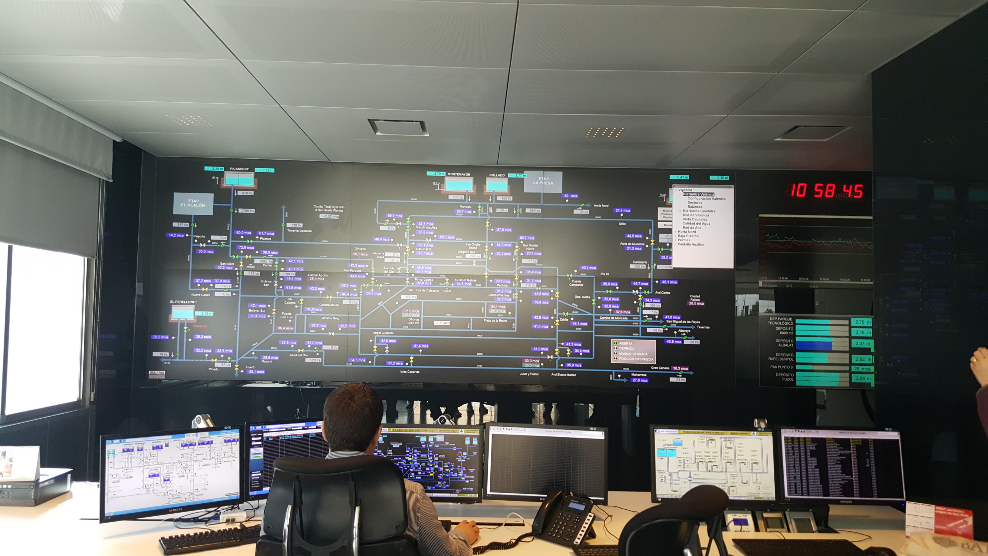 |
| Summary slide of Aguas de Valencia presentation: how are decisions made ? |
Control room at Aguas de Valencia
|
Managing Stormwater for IrrigationOverall, about 20% of treated wastewater is re-used in Spain for irrigation and landscaping. Valencia has a secondary network which supplies non-potable water for the irrigation of the
huerta. It costs around 25% less than drinking water and is supplied by The Central Operative of the Sanejamente, who are also responsible for wastewater treatment and stormwater drains in the city. Valencia is susceptible to flooding due to several factors, including its vulnerability to heavy rainfall due to the modification of the natural landscape and processes through human occupation of the coastal flood plains. It has a relatively flat topography and future sea level rises are likely to cause problems.
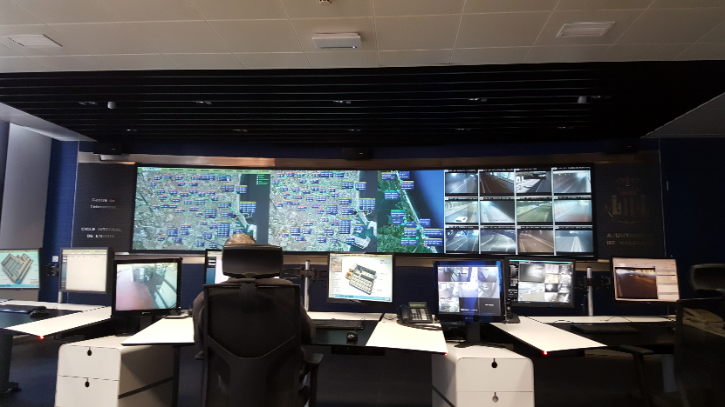 |
The control room of The Central Operative of the Sanejamente is the nerve centre responsible for ensuring that all rainwater and stormwater is pumped across the region for irrigation purposes. During heavy rainfall, the rainwater is either stored in large tanks for re-use or is pumped three kilometres into the sea to protect the city from flooding.
|
Control Room, Central Operative of the Sanejamente
|
|
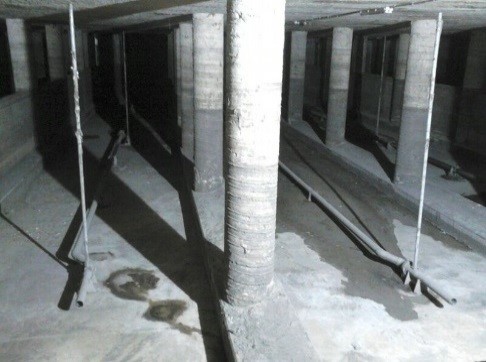 |
The rainwater harvesting tank pictured was constructed in 2008 and is situated close to the Valencia beach area. It has a capacity of 200,000 litres and is used to store rainwater or stormwater which is either pumped out to the huertas for irrigation purposes or into the sea for dispersal, depending on the time of year and requirements. It is an impressive example of a method implemented to protect the city from flooding and to manage water supply.
|
| Underground rainwater harvesting tank, Valencia |
|
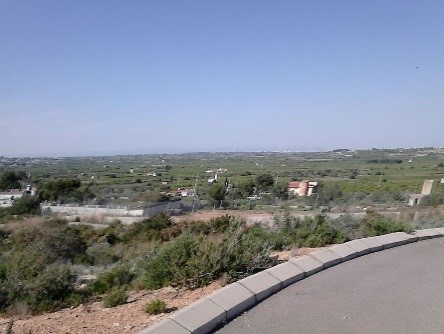 |
We were able to venture out of the city to the "huertas" in Picassent, to views of the irrigated farms. La Huerta is the fertile coastal plain around the city. It was very interesting to visit the irrigation control centre and the pumping station to physically see how the water supply for irrigation is managed and controlled. The pumping station operates the irrigation system. A control board displayed the fields being irrigated in real time and an alarm system alerts the engineers of any issues. Valencia’s famous oranges can be seen growing across the orchards as well as a wide variety of produce including rice, artichokes, potatoes, raisins and onions. All the fruit and vegetables, cultivated in La Huerta and for sale in the city’s markets, are known as ‘zero-mile products’ because they are harvested in the perimeters of the city.
|
| View over La Huerta near Piccasent |
|
El Tribunal de las Aguas
The ‘Water Court’, El Tribunal de las Aguas, is the oldest institution of justice in Europe, held at el Plaza de la Virgen: Valencia Cathedral. The court has been held weekly on a Thursday at noon for a thousand years and was originally introduced for farmers to regulate irrigation infrastructure in Valencia’s farming fields. However, at present, as we all experienced that day, the meeting was brief and was over in a couple of minutes as there were no irrigation disputes to discuss. This did not deter the crowds of tourists who surrounded the gates early to get the best shots of the tribunal in action! The circle of the Syndics’ benches is pictured by the Apostles Gate:
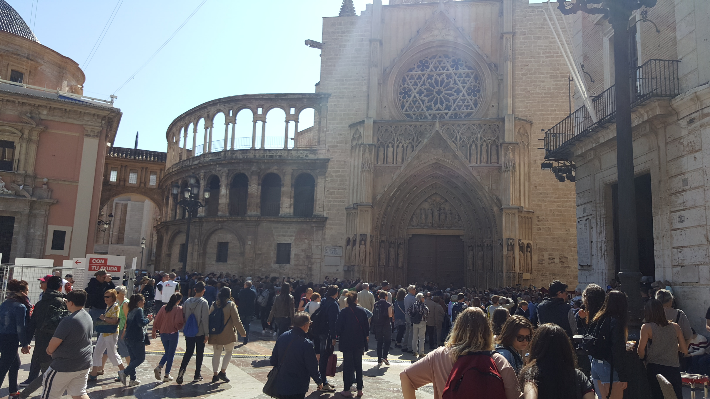 |
 |
Valencia Cathedral
|
El Tribunal de las Aguas, Valencia
|














